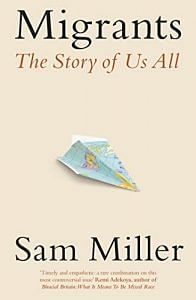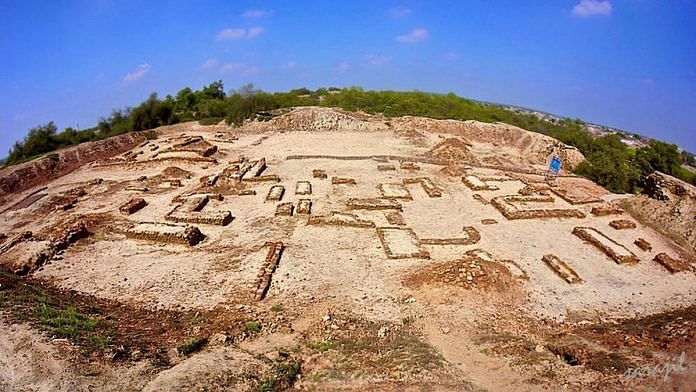The argument about the origins of the Aryans lives on in modern India and is a matter of ill-tempered and often unpleasant debate. At the internet-trolling extremes are two theories known by almost-identical acronyms, AIT and OIT, standing for ‘Aryan Invasion Theory’ and ‘Out of India Theory’ respectively. Their supporters tend to shout at and curse each other on social media forums, often to the bafflement of outsiders. The old case for the AIT has been described above, but its more temperate modern supporters now suggest that migration would be a better word than invasion, and argue that, in fact, there was never evidence of a European origin for the Aryans, who probably originated in Central Asia or the Russian steppes. The supporters of the OIT, meanwhile, draw on ancient traditions, co-opted into modern nationalism, according to which Indians have always been in India. Megasthenes had asserted that India ‘is peopled by races both numerous and diverse, of which not even one was originally of foreign descent’, and indeed there are no clear references to any significant group migration in the earliest Indian writings. Therefore, by this logic, India must be the Indo-European homeland.
Far less dangerous than the Nazi claim to Aryan ancestry, though just as absurd, have been the more detailed arguments put forward by some supporters of the Out of India Theory. The forerunner here is P. N. Oak, an amateur Indian historian and author of Some Missing Chapters of World History, who argues that India’s history has always been written by its enemies. The book reads, at times, like a brilliant spoof, making satirical mincemeat of white supremacists and their notions of European Aryanism. The chapter titles give a clue: ‘Ancient England was a Hindu Country’, ‘Westminster Abbey was also a Shiva Temple’ and ‘Ancient Italy was a Hindu Country and the Pope a Hindu Priest’. The cathedral city of Salisbury, we learn, was originally Shaileeshpury, meaning ‘town of the mountain god’. It goes on and on in this vein (Rome is named after Lord Ram, while Abraham was originally Brahma and Christ was Krishna). Sadly, it is not a spoof. P. N. Oak, who died in 2007, believed it all, and so did a tiny band of followers.
In their attempt to place the Indo-European homeland firmly in India, most Out of India supporters do not go nearly as far as Oak. And, fortunately, amateur linguistics plays a smaller role these days, on both sides of the Aryan argument. Archaeologists tried to resolve the issue by focusing on excavations at sites belonging to the Harappan civilisation that pre-date the early Sanskrit texts. The theory was simple: if these excavations show a continuity with Aryan culture, then this would prove the OIT; if they don’t show a continuity, this would prove the AIT. In practice, it wasn’t so simple, and the divisions deepened as part of an arcane journey into equine archaeology that deserves only a footnote here. It feels as if there’s only one certainty now: if you are a Hindu nationalist, you are more likely to support the notion of India as the Indo-European homeland. While if you have a more secular, multi-cultural image of India, you are more likely to support the idea of large-scale migration into India.
Over the last few years, DNA evidence has been brought to bear on the wider question of the location of that supposed Indo-European homeland, and a potential resolution to the AIT/OIT dispute. As a result, there’s a growing scientific consensus about ancient movements of population from the stretch of land usually referred to as the Russian steppes, covering eastern Ukraine, parts of southern Russia and western Kazakhstan. This region’s ancient nomadic inhabitants have been identified as the first Indo-Europeans – whose descendants can be found in large numbers throughout communities who speak Indo-European languages in Europe and Asia and, as a result of more recent migrations, in the Americas and Australasia.
Also read: 200 paintings, 274 folios—Why Abul Fazl’s ‘Akbarnama’ remains an unmatched document
A journalist called Tony Joseph has taken on the task of explaining to his fellow Indians that the Aryans almost certainly came from the Russian steppes. He’s not been given an easy time. His 2018 book, Early Indians, sets out how, according to the latest research, migrants, largely male, entered what is now India around four thousand years ago, introducing an early version of Sanskrit as well as new religious beliefs and practices – some of which play an important role in modern Hinduism. He was roundly condemned for this by many Hindu nationalists. His critics appear deeply threatened by the idea that migrants had contributed to their genetic stock, and to the languages, beliefs and customs of which they are so proud. The internet, as usual, incubates and exacerbates all this. And the tone of some online comments has been both desperate and vitriolic (though there has been some more thoughtful criticism). Tony Joseph was accused of writing ‘propaganda’ which will ‘destroy the fabric of the country’, of promoting ‘racist Eurocentric lies’, of being ‘deceptive, dishonest . . . a leftist has been’, of assembling a ‘hodge-podge of self-contradicting and incorrect claims’ which should be consigned to the ‘trash heap’. For those who have never lived in India, it can seem bizarre that an obscure debate about ancient migration should become so emotional, so clouded by rage. But most of those involved would admit, at least privately, that the question about Aryans in India is only partly about the truth, about what may have happened four thousand years ago. Ancient migration has become a proxy for a whole range of other issues. It is part of a struggle over the identity of modern India, in which issues of caste, gender, language, religion, skin colour and, yes, migration play an important role. There are profound disagreements over that identity, and deep divisions on each of those issues. The Aryan debate touches on all of them – a subject that deserves a book of its own, not this skimpy paragraph. But it’s worth noting that power in India remains largely, but not entirely, in the hands of paler-skinned, higher-caste male northerners who speak Indo-European languages. And they, if one trusts the geneticists, are more likely to be descended from people who migrated to India about four thousand years ago.
 Excerpted with permission from Migrants: The Story of Us All, Sam Miller, Little, Brown/Hachette India.
Excerpted with permission from Migrants: The Story of Us All, Sam Miller, Little, Brown/Hachette India.



